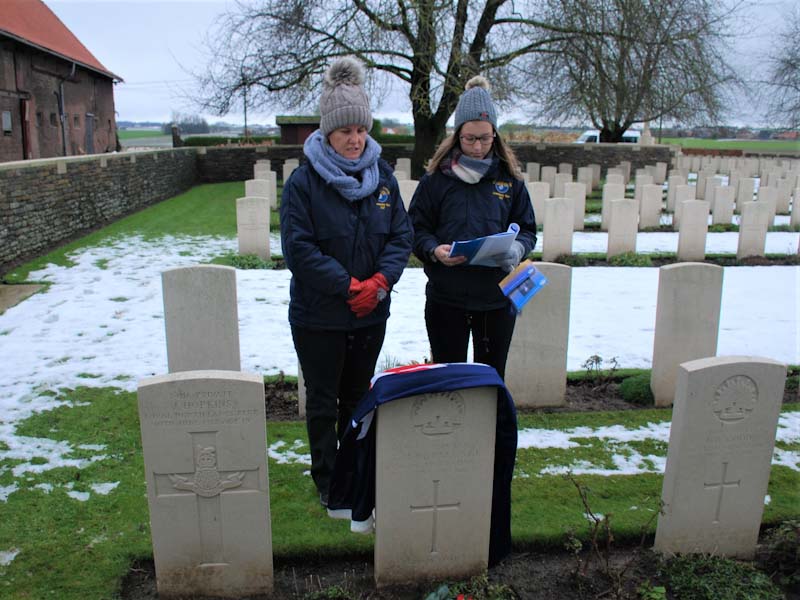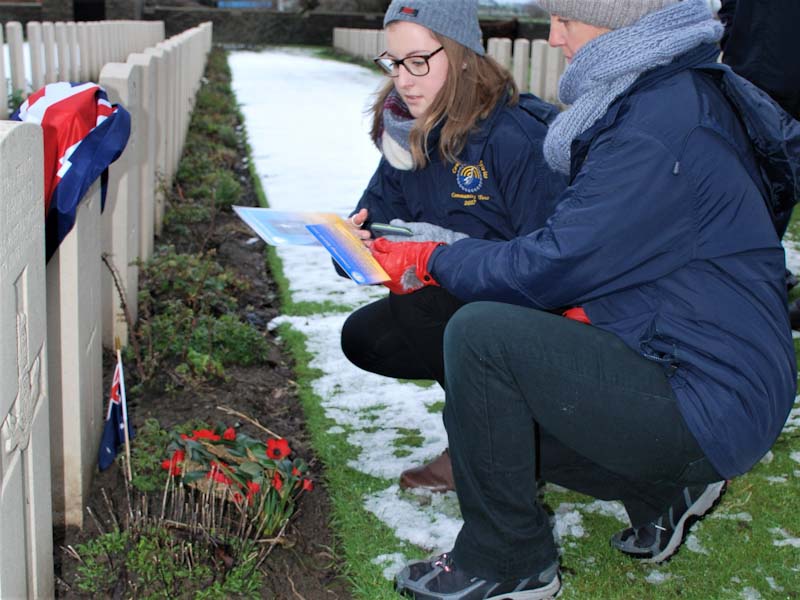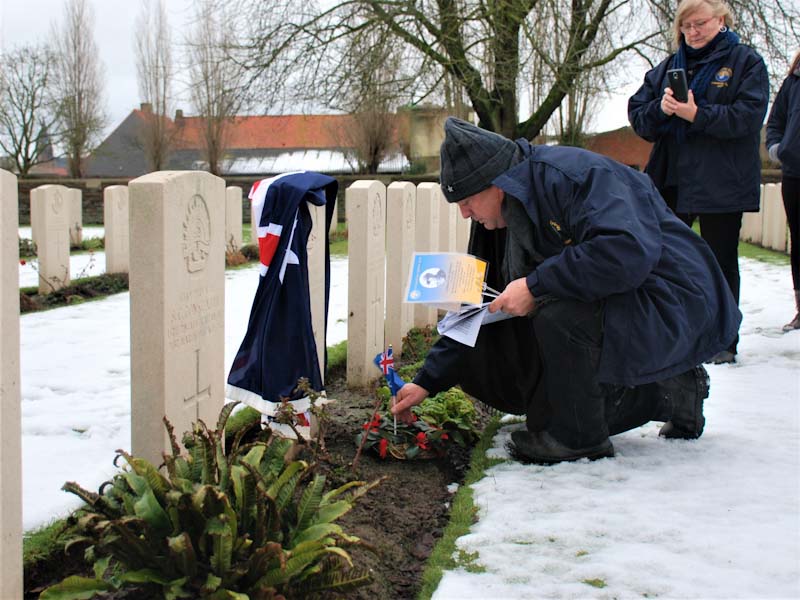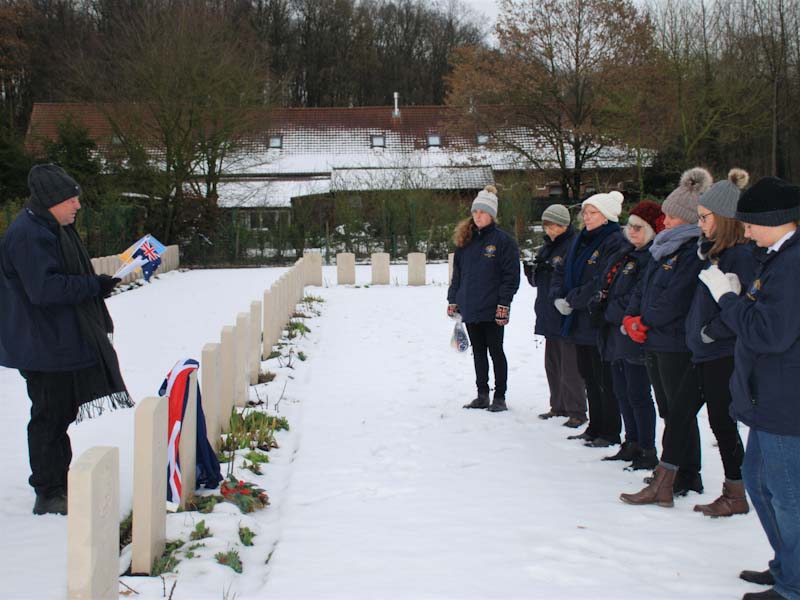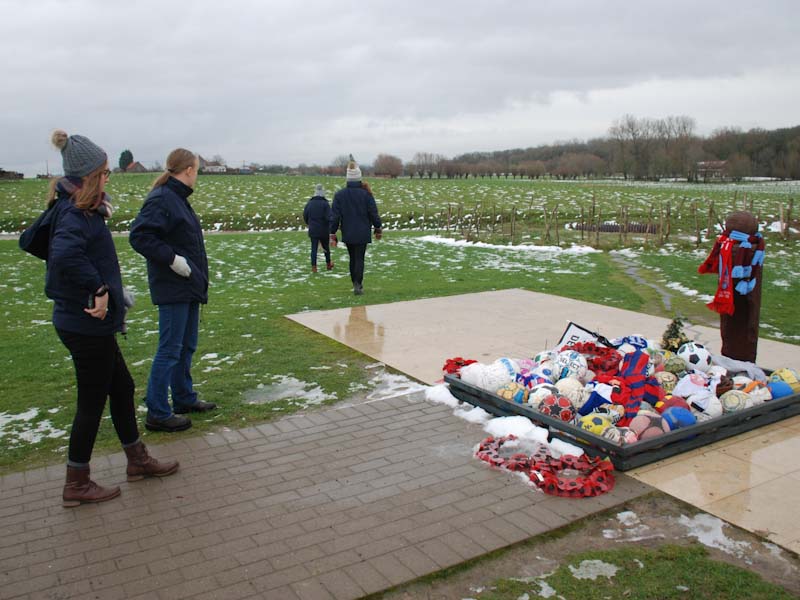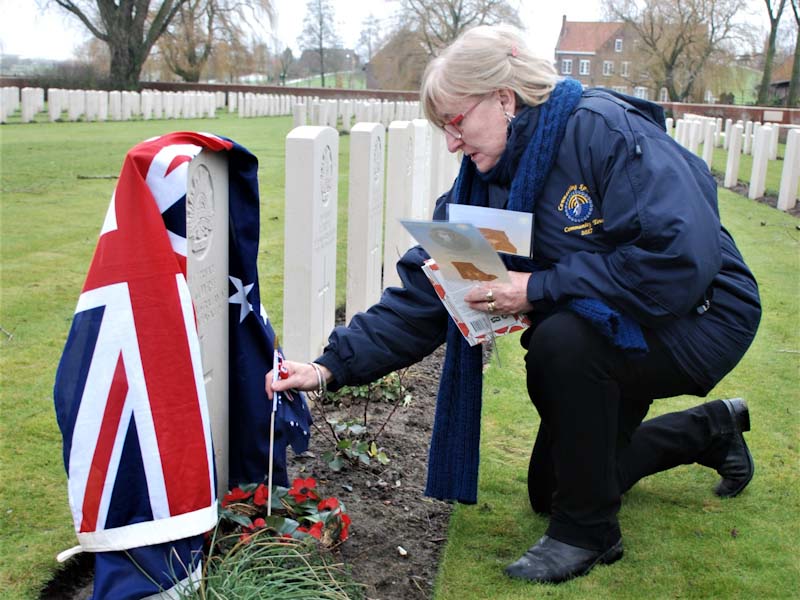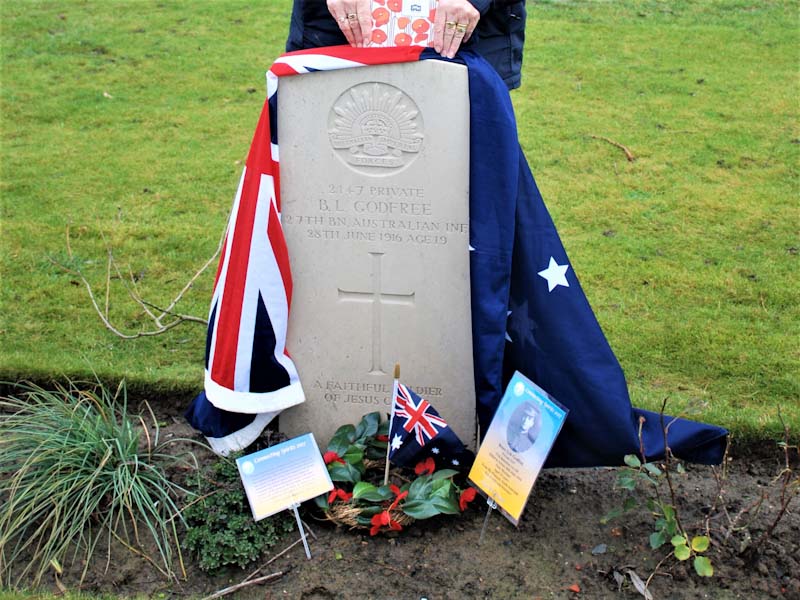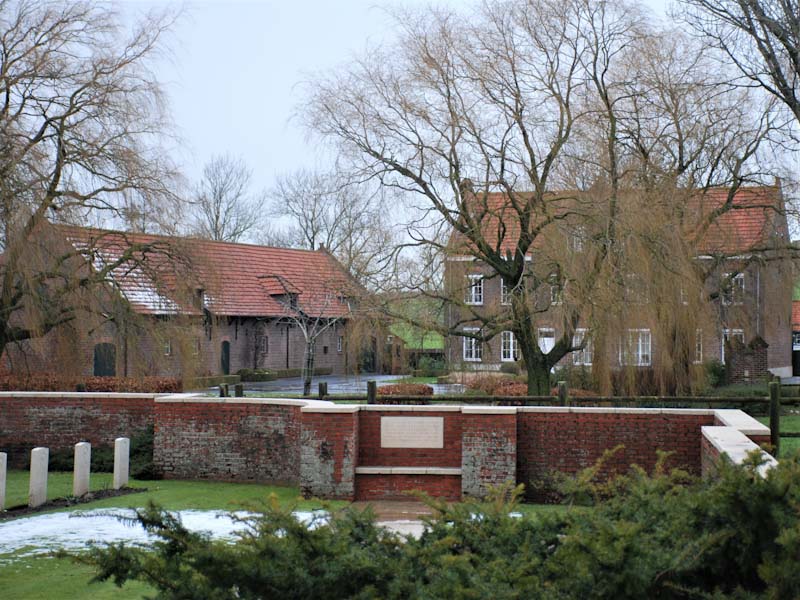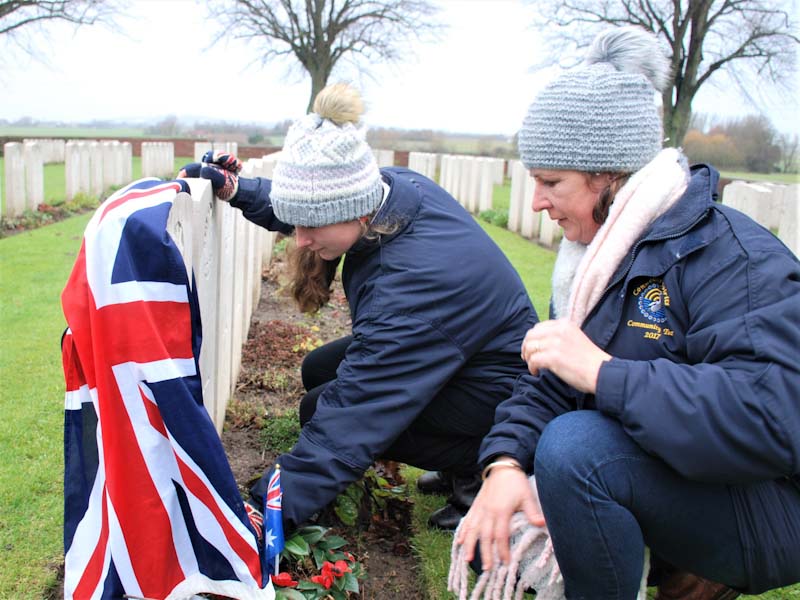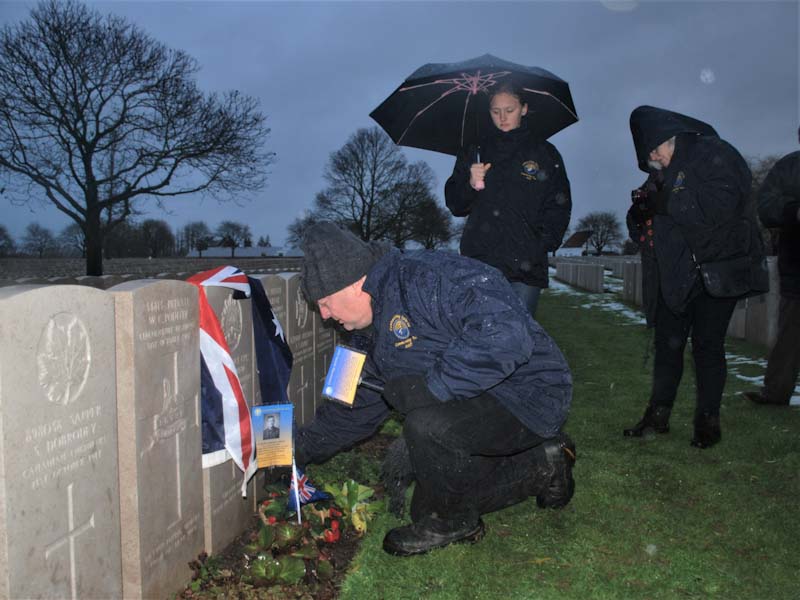December 13
Today focussed on the area south of Ieper, around Messines. The first stop for the day was the “Peace Pool” at Spanbroekmolen. This is one of the 19 mines that were detonated on the 7th June 1917, the first day of the “Battle of Messines”. Unlike Lochnagar, further south in the Somme, the craters that remain in Belgium are filled with water and the tranquillity of these smooth pools belies the violence which produced them.
The next visit was to Kandahar Farm where we commemorated two soldiers, Thomas Rettalack, from near Mannum, who was commemorated by Alyssa and Cheryl Neville, and William Shillabeer, Mal’s first cousin twice removed.
We then made our way to Ploegsteert Wood and at the Underhill Farm Cemetery, Mal commemorated Vincent Mocatti, from Kalgoorlie in Western Australia. Vincent spent just over a month on the front before he was killed by shellfire while in the support trenches.
From here we went to the area near the Prowse Point Cemetery. This area is often held up as the spot where the “Christmas Truce” was held in 1914. In truth there were many places where informal truces took place, but this has become the most famous spot to commemorate it. There is even a memorial by FIFA here as legend has it that the English and German soldiers played a game of soccer in No Man’s Land on Christmas Day here. There is no evidence that this actually took place but never let the truth get in the way of a good story!
Doubling back somewhat we made our way to the La Plus Douve Farm Cemetery. Here Julie commemorated her father’s cousin, Bruce Godfree. The family story was that Bruce was killed in the first landing at Gallipoli, and in fact didn’t even make it out of the boat. It wasn’t until Julie began researching him for Connecting Spirits that she discovered that while he did serve at Gallipoli it wasn’t until November 1915 when he arrived there, and he was taken off quite quickly after developing mumps. He recovered and, along with most of the AIF, was transferred to the Western Front in early 1916. The Australians, being seen as quite inexperienced in trench warfare, were initially posted to the area around Armentieres, which was known as the nursery sector, as it was relatively quiet and a good place for soldiers to develop the skills and routines required to function in the trenches. It was in this area, before any Australians were actively engaged in a set battle, that Bruce was killed. He was only 19 at the time and was helping to dig out a fellow soldier when he was hit by shellfire. He had been a student at Price Alfred College and one of his teachers there, Blacket, was a captain in his battalion. Blacket wrote to his wife about the loss of Bruce before losing his own life a week later. He is buried in the next row from Bruce’s grave.
As the name suggests La Plus Douve Farm cemetery is located right next to a working farm, and Mal would love to own such a beautiful farmhouse in such lush countryside.
It was across the border in to France and to Armentieres, where Mal commemorated Tamika’s relative, Garnet Kelly. Tamika was feeling unwell and wasn’t able to join us that day. Garnet Kelly is remembered back in South Australia. Just south of Normanville is a small reserve dedicated to his memory. This has just recently been restored and rededicated to his memory, thanks to people who have bought some of the land that he was farming on before he went to war.
From here we travelled to Hazebrouck to commemorate Cleve James Scott, a distant relative of Mel and Charlotte. This wasn’t a planned commemoration, but as information comes to hand, we adapt and fit in wherever we can.
From here we started to head back to Belgium, stopping at Godewaersvelde British Cemetery where Julie commemorated Edward Cheney.
Back across the border and into France to visit Lijssenthoek Military Cemetery. Here Julie commemorated Theo Pflaum, a young man from Birdwood, who lived in what is now the Birdwood Primary School. He has last seen his younger brother, Ray, wounded during the Battle of Fromelles. Ray was one of the first to be identified when a mass grave was discovered over 90 years after the battle. Mal also commemorated his second cousin twice removed, Cyril Dunstan Andrew, at the massive cemetery. Lijssenthoek was the site known as Remy Siding where there were a number of Casualty Clearing Stations. As a result, the man buried here are almost all identified and there are over 10,000 of them. The cemetery is also much more ordered than many of the battlefield cemeteries and the graves are laid out in chronological order. You can move from one day to the next, by the date of death on the headstones and not miss a day for over 3 years.
As you can see from the photos below, by this time it was getting late and was dark, cold and wet. Time to head back to our cosy apartments at the Menin Gate House and get something hot to eat!
